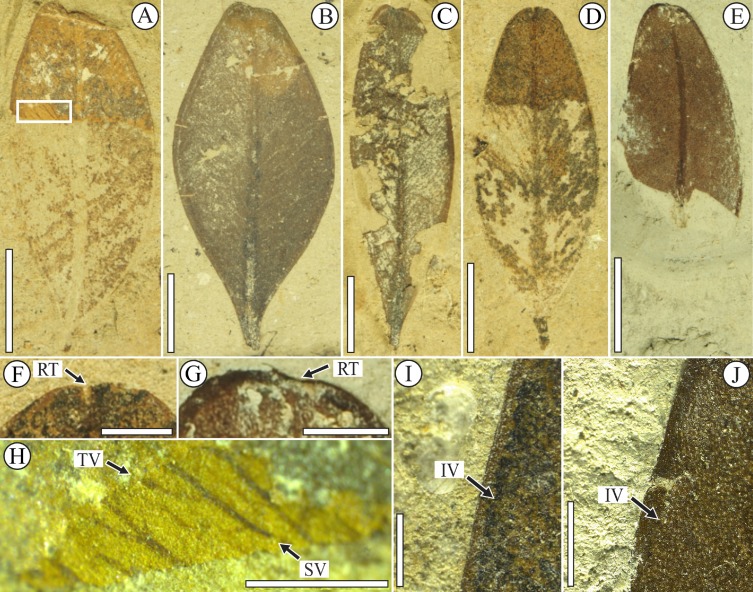Buxus is a genus (the type of the family Buxaceae) of evergreen shrubs and small trees having opposite entire leaves and capsular fruit. This genus is commonly known as the boxwoods and is the most diverse in the family Buxaceae widely distributed on all continents except Australia and Antarctica.
During two fieldwork seasons in 2014 and 2015, researchers from Xishuangbanna Tropical Botanical Garden (XTBG) collected five Buxus fossil leaves from the Upper Pliocene Sanying Formation of Hongyuan, Heqing County, Yunnan Province, SW China. The fossil leaves were well preserved as leaf compressions with cuticles.
The researchers compared Buxus fossil specimens from Heqing to the 11 extant species of sect. Buxus. According to the comparison with extant and fossil Buxus species, the Buxus fossils from Heqing are designated as a new species. They named it as Buxus pliosinica H.S. Huang, T. Su et Z.K. Zhou and got it published in Palaeoworld.
Leaves of B. pliosinica are elliptic and small, with entire margin, retuse tip, intramarginal vein, and exmedially ramified tertiary veins. The leaves are hypostomatic with anomocytic stomatal apparatuses and giant stomata.
Based on comparisons of leaf morphological and cuticular features, B. sempervirens Linnaeus is considered as the nearest living relative of B. pliosinica.
Buxus pliosinica is the first fossil record of Buxus from the SE margin of the Tibetan Plateau. The occurrence of B. pliosinica indicates that Buxus has existed on the SE margin of the Tibetan Plateau since at least the late Pliocene (about 3.6 -2.6 million years ago).
Contact
ZHOU Zhekun, Ph.D
Key Laboratory of Tropical Forest Ecology, Xishuangbanna Tropical Botanical Garden, Chinese Academy of Sciences, Mengla, Yunnan 666303, China
Tel: 86-871-65109223
E-mail: zhouzk@xtbg.ac.cn
Buxus pliosinica from Hongyuan, Heqing County, Yunnan Province, SW China.
(Images by HUANG Huasheng)

